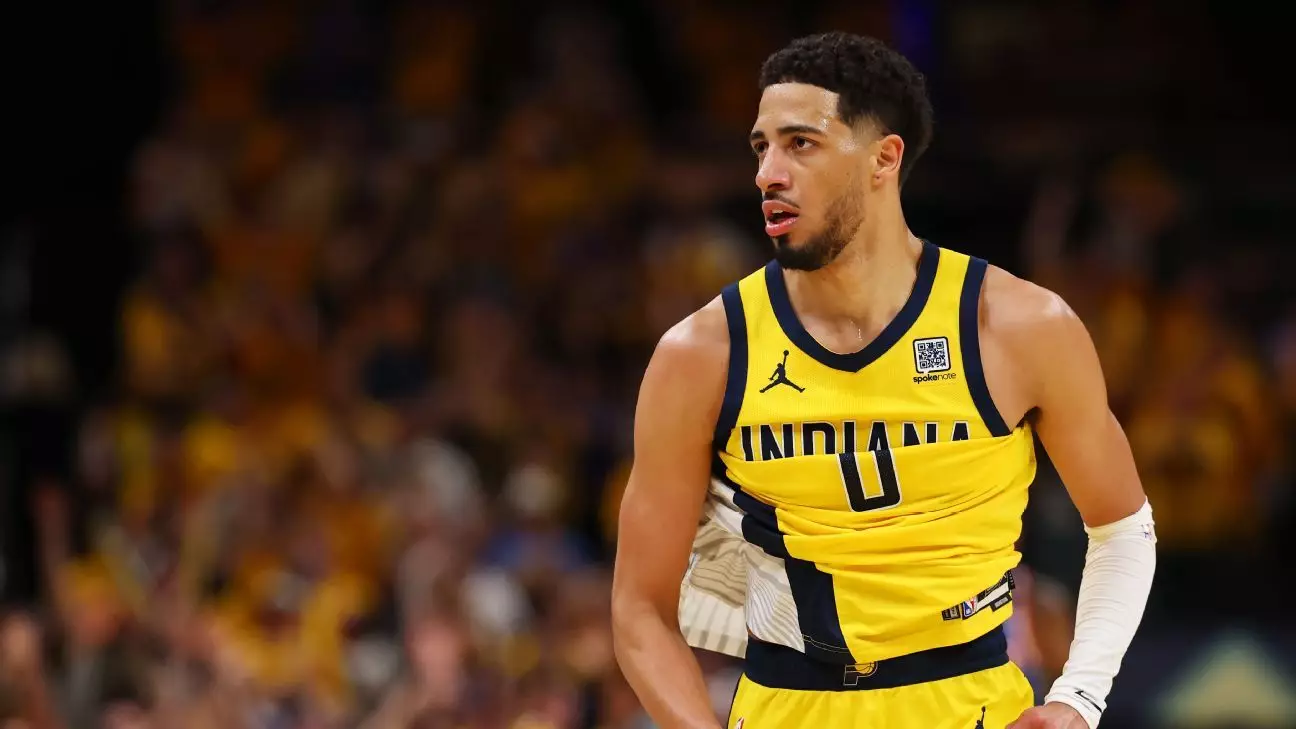The recent surge in Achilles injuries across the NBA has sparked widespread speculation, with many pointing fingers at factors like increased game frequency and player workload. However, Tyrese Haliburton’s candid stance prompts a vital reexamination: perhaps we are overlooking a deeper, more complex issue rooted in the sport’s DNA. Haliburton’s assertion that these injuries are mainly a matter of “bad luck” might seem like a dismissive cop-out, but it forces us to consider whether our current understanding and management practices fully address the problem or merely mask its true nature.
The prevailing belief that longer seasons or heavier minutes exacerbate injury risk is widespread but, as Haliburton and NBA officials suggest, not firmly supported by empirical evidence. Commissioner Adam Silver’s comments about injuries occurring early in the season imply an element of randomness—an unlucky convergence of circumstances—and perhaps a lack of preventive mechanisms, rather than an outright causality linked solely to load management. This perspective challenges teams, trainers, and medical professionals to rethink whether the traditional focus on workload reduction is sufficient or if the root causes are more insidious.
The Mysteries of Tissue Fragility and Unpredictable Casualties
Achilles injuries are notably complex, often involving an interplay of biomechanics, genetics, and micro-damage accumulation that eludes straightforward explanation. The fact that Haliburton was playing through a calf strain, which should have predisposed him to further injury, exemplifies the unpredictable nature of these tears. It exposes a critical gap in injury prevention: perhaps the thresholds for tissue failure are more fragile than previously thought, especially in professional athletes pushed to their physical limits.
Research suggests no single catalyst—whether stress, fatigue, or overuse—can comprehensively account for Achilles tears. Instead, these injuries seem to arise from a toxicity of vulnerabilities accumulating silently until a seemingly minor event triggers catastrophe. Comparing the injuries of Durant and Tatum, both of whom suffered Achilles tears in high-stakes moments, vividly illustrates that luck coincides with underlying tissue weakness, making these injuries partly a matter of chance and partly a reflection of athletes’ biological limits.
Does The Culture of High Performance Accelerate the Achilles Epidemic?
The relentless pursuit of excellence in the NBA cultivates a culture where players are encouraged, if not pressured, to push through pain, rest, and injury. This high-performance ethos, intertwined with relentless schedules, may indirectly contribute to the anatomy’s deterioration over time. Skills and athletic prowess are celebrated, often at the expense of adequate recovery and long-term health.
While Silver’s dismissal of game numbers as a primary cause might seem reassuring, it glosses over the subtle effects of cumulative stress and micro-trauma. The expectation for players to perform at peak levels repeatedly could subtly degrade Achilles tendons at the microscopic level, making them more susceptible to injury. The challenge lies not in a single game or a set of minutes but in an environment that over time erodes tissue resilience.
Reevaluating Our Approach to Prevention and Care
The focus should shift away from reactive measures—like resting players after injuries—and towards proactive, holistic management. This involves integrating personalized medical assessments that consider genetics, biomechanics, and lifestyle factors, rather than adopting a one-size-fits-all approach. Haliburton’s experience underscores the importance of ongoing monitoring; had there been a more profound understanding of his calf strain’s progression, perhaps the tear could have been prevented or mitigated.
Innovations in medical technology, from advanced imaging to regenerative therapies, need to be incorporated more aggressively into player care routines. Moreover, the culture of playing through pain should be challenged, emphasizing health and longevity over short-term contribution. Coaches, management, and players must collaboratively redefine success, prioritizing sustainable careers.
The Psychological Toll of Injury and the Road to Resilience
Haliburton’s dialogue about using his recovery period to deepen his basketball IQ reveals resilience—a critical, often overlooked element of injury management. The psychological dimension of ACL, Achilles, and other serious injuries can’t be underestimated; mental health support should be a standard part of the recovery process. Athletes who accept their vulnerability and view injury as part of their growth are more likely to return stronger physically and mentally.
Yet, the narrative of luck downplays the responsibility shared by teams and the league in safeguarding their athletes. If injuries are predominantly ‘bad luck,’ then how do we explain the considerable variation in injury rates among teams with similar schedules? Here lies an underlying truth: the sport’s culture, medical practices, and player management policies significantly influence injury outcomes, and shifting this paradigm requires deliberate, strategic effort.
The real challenge for the NBA is to transcend the myth of randomness and embrace a data-driven understanding of injury risks. It’s about recognizing that while luck will always be a factor, much of what we deem “bad luck” stems from preventable, systemic shortcomings. Only by acknowledging these issues can the league forge a path towards safer, more sustainable basketball—one where injuries aren’t merely attributed to chance but understood as preventable challenges that demand our full attention.


Leave a Reply